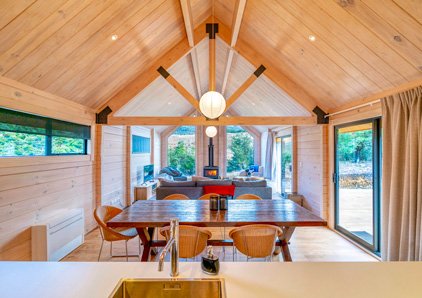

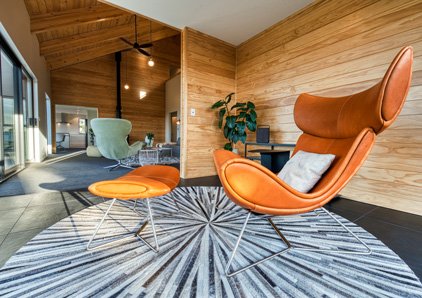
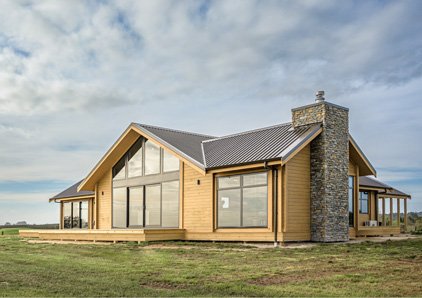
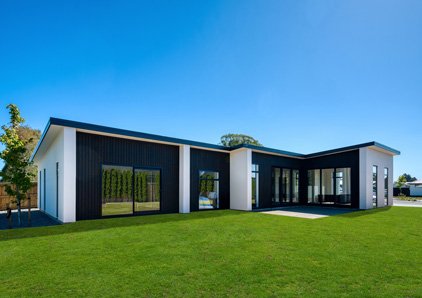

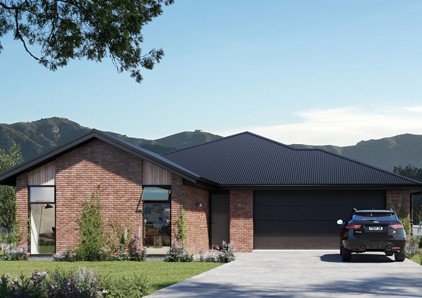
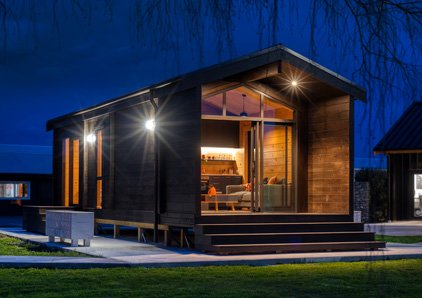
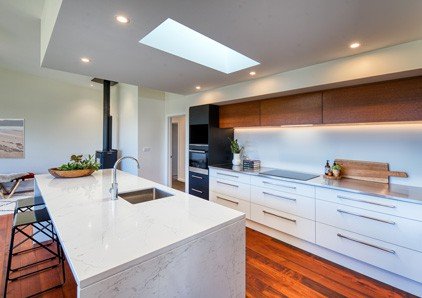
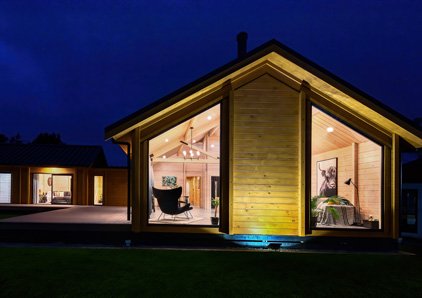

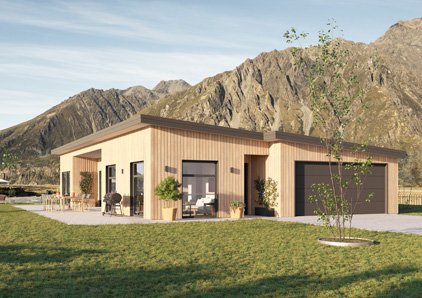

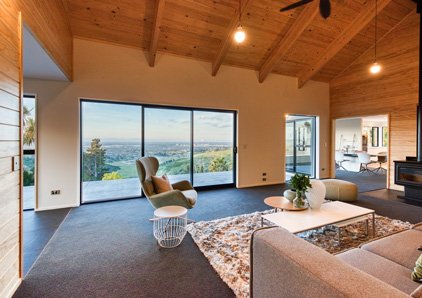
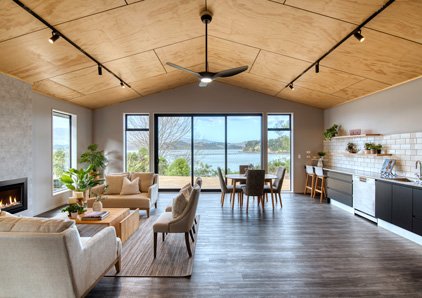
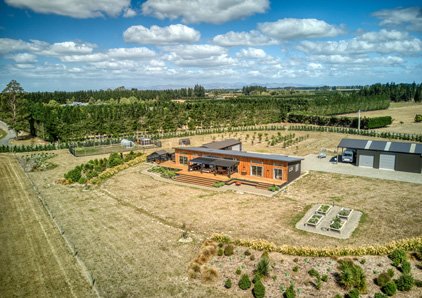
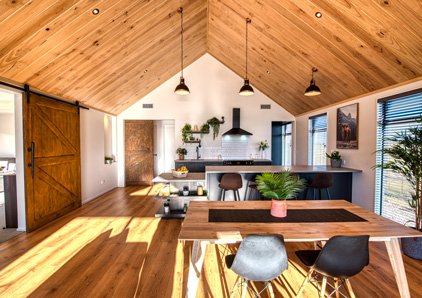

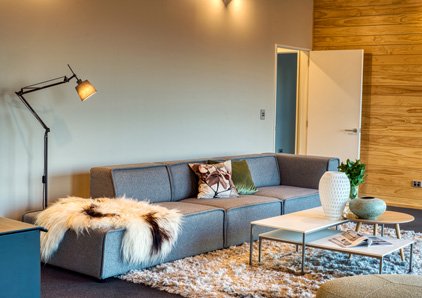
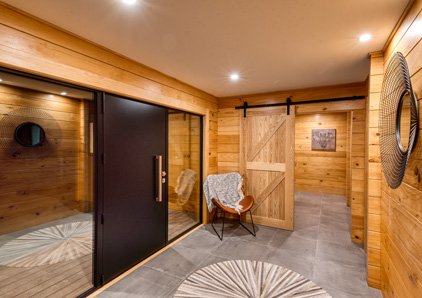


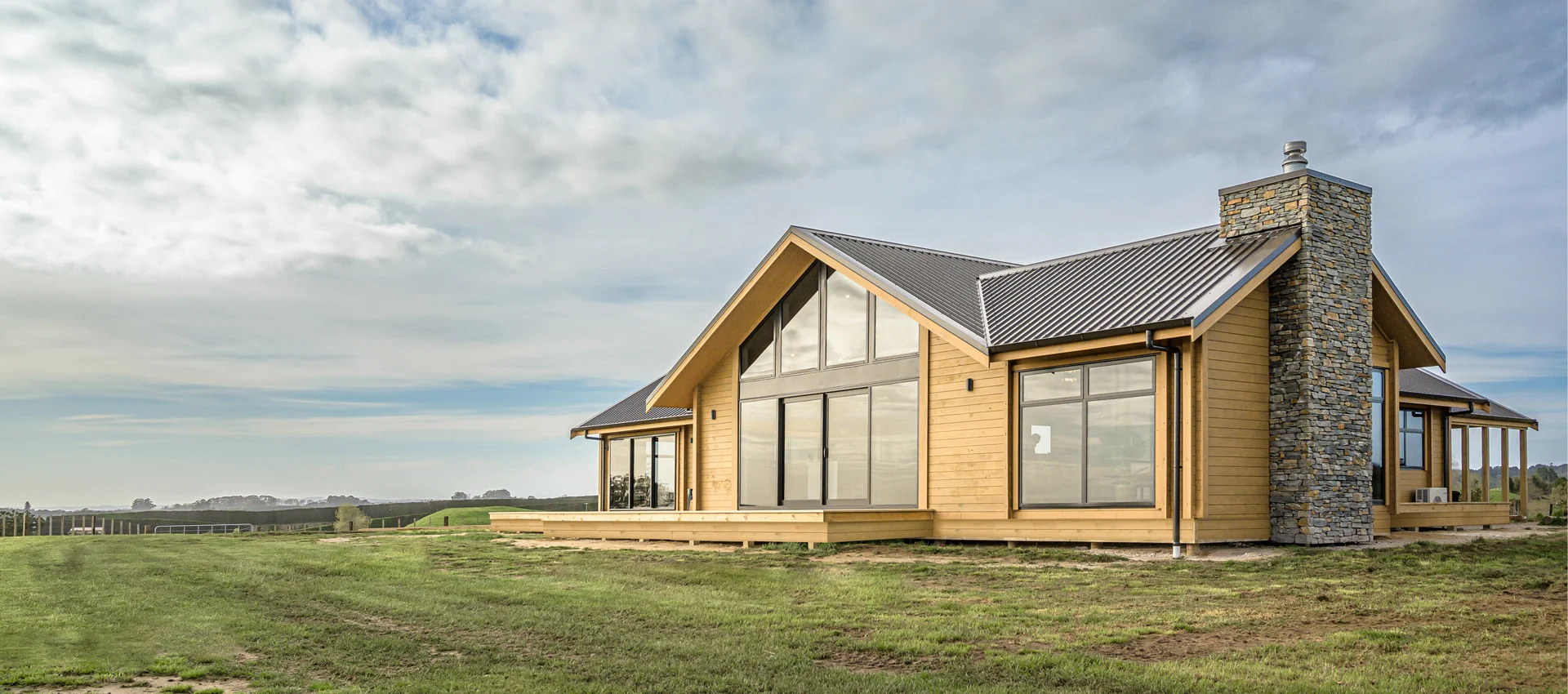
Earthquake proof homes
Earthquake proof homes from our Solid Timber range performed exceptionally well during the Christchurch earthquakes of 2011, and the Kaikoura earthquakes of 2016. They didn’t just save lives by remaining structurally intact, they allowed the occupants of them to carry on their lives in the years following either free or close-to-free from the duress experienced by owner’s of homes whose homes weren’t designed to handle major earthquakes, many of whom are to this day (in 2023) still engaged in highly stressful claim disputes with their insurance providers.

Put to the test in the Christchurch and Kaikoura earthquakes
In one instance, one of our Solid Timber homes remained completely unscathed following the 7.8 earthquake in Waiau near Kaikoura, despite the home being positioned 100 metres from the fault line. Many other homes and buildings in the same small town were decimated and in ruins. The location of the fault had been hitherto unknown to geologists and engineers.
Watch the amazing footage of that Waiau home the day after the earthquake, and the happy homeowner here (footage courtesy of the New Zealand Herald):
We regularly have owners of our Solid Timber homes contact us or write public reviews saying how safe they felt in their homes during the earthquakes. Here are a few:
“The best earthquake proof house – it handled the 7.8 no problems. I’d recommend to anyone going to build. Cheers Fraemohs.”
“Hi, not sure if this is of interest to the design team at Fraemohs but we have a 35 year old Fraemohs house on piles near Waiau so wanted to let you know that we are delighted to report no earthquake damage. The house coped very well with a huge shake.”
“I was in Hanmer in a wooden Fraemohs chalet trying to fix my phone while my wife watched a TV movie when the first big 7.5 hit. I have to say the chalet was great – strong as a boat in a storm as we rocked and rolled. It was built on a good thick concrete pad and the interlocking beam walls performed perfectly.”
“The house just rattle and rolled and then settled back into position again.”
“I live in a Fraemohs home in Spencerville and after 3 major earthquakes we have had no damage. Thanks Fraemohs for keeping my family safe.”
“Just a couple of kilometres up the road virtually an entire subdivision got ruined by the earthquakes – but our Fraemohs didn’t even require repairs. The only thing on our property to suffer damage was the driveway!”
“We have just moved to a property with a 70s original Fraemohs house – it rolled with the quake but we still felt safe – unlike the Chch house that broke apart in Feb 11.”
“Thanks Fraemohs, I feel safe in my home”
“Our 1981 Fraemohs home on poles in Mt Pleasant Chch had no damage requiring repair other than a hot water cylinder. Recommend!”
Freakish strength and flexibility, tested and proven
Imagine a formidable athlete who can bench press 10x his or her body weight yet moves with the grace and elegance of a ballerina. This unlikely combination of strength and flexibility are at the core of why our Solid Timber homes perform as they do in earthquakes.
Trying to resist nature is a fool’s game. Embracing nature and working with it – that’s both smart and sustainable. When the wind blows, a tree moves with the wind. If it didn’t, it would break. When the earth moves our Solid Timber homes move with the earth through the interlocking timber system.
We had our timber walls tested with earthquake simulation machinery (P21 testing) at Scion (the Crown research institute in Rotorua) and their machinery was literally unable to break our walls on its highest setting. After the testing the timber wall was inspected closely and not a speck of damage was found. In your mind, compare that to how you expect a regular plasterboard wall would perform in a test like this (or an actual earthquake). A plasterboard wall would probably be in ruins. Even a minor earthquake can severely damage plasterboard walls.
Irresistible strength + astounding flexibility = unrivaled safety and peace of mind.

An engineering perspective
The following is an excerpt from a report titled Performance Of Houses During The Christchurch Earthquakes of 22 February 2011 by Andrew Buchanan, David Carradine and Hugh Morris for The New Zealand Society for Earthquake Engineering Inc:
While these buildings were reported to have moved significantly during the earthquake, the damage observed after the event was minimal, even in cases where significant ground settlement (up to 200 mm) was observed. It was noted that for Fraemohs houses built using 63mm thick (2 and 3 laminates) walls, there were some cases where small portions of the timber sections had sheared off near the bottoms of walls, as shown in Figure 43. This was reported to be the most severe damage to any of the inspected Fraemohs homes and it was noted that the failures occurred in places where the laminates were half notched, therefore having a smaller cross section.
No damage was observed in Fraemohs homes made using 93 mm thick, 3 board laminates. A Fraemohs house located in the Avondale area of Christchurch was found to have only minimal separation of some of the log/timber courses even though the house suffered differential settlements up to 100 mm, cracking of the concrete floor slab, and severe liquefaction resulting in several tonnes of silt needing to be removed from inside the house and from the surrounding yard.
What’s quite remarkable is that our homes which performed so well during the Christchurch and Kaikoura earthquakes, were from our old range which used thinner timber panels and in many cases, the homes themselves were decades old. Since the earthquakes we have updated the design of our interlocking timber system which includes using 100mm thick 3 board external walls and 60mm thick internal walls as standard. Besides making them even warmer and giving them a more contemporary look, the thicker timber panels and advanced engineering of our new Solid Timber designs makes them even safer in an earthquake than the ones which performed so well during the Christchurch and Kaikoura earthquakes.
Research undertaken by the University of Canterbury in 2021 has further demonstrated the superior performance of cross laminated timber during massive earthquakes. This applies for residential homes but importantly also, shows how timber can be used in the construction of larger buildings. As well as being lightweight and incredibly safe in earthquakes, using sustainably grown timber in homes and buildings will help to reduce the construction industry’s massive >30% of global CO2 emissions it is currently responsible for.
Low damage design
Locally, some insurers have become reluctant to insure a lot of New Zealand’s building stock because of the cost of remediation after a major event, making it increasingly expensive or impossible to get cover. Some insurers are threatening to pull out of the New Zealand market altogether.
A shift in thinking…
In this context, we are seeing a shift in focus around seismic design. Historically, we’ve rightly focussed on life-safety; aiming to prevent a catastrophic collapse by designing the building to yield (sustain damage) in a controlled manner during a large seismic event, enabling everyone inside to evacuate. While this limits loss of life, it is often difficult or impossible to repair this damage. This contributes to the enormous rebuild costs, jittery insurers, and stressful relocations for families and businesses.
Clearly, we need our buildings to remain serviceable where possible after a major earthquake. The construction industry is starting to respond to this, with engineers and architects employing “low-damage design” principles in their new buildings. For commercial buildings, there are a number of strategies available to increase building resilience, such as:
- Making the building so strong that the design limit is never reached, even in the largest anticipated event. Sounds obvious, doesn’t it? Unfortunately, the cost of this is so great that it is prohibitive for all but the most essential structures, such as hospitals and significant civic buildings.
- Protecting a building’s structure in a significant event by using base isolators. These prevent the most significant forces from the ground from being transferred into the structure.
- Dispersing the shaking energy throughout the entire structure and dissipating it in specially designed dampers at joints between structural elements. If there is any yielding during a seismic event, it is concentrated in these elements. They are specifically designed to be easy and inexpensive to replace so the building remains functional or can be put back into service very quickly.
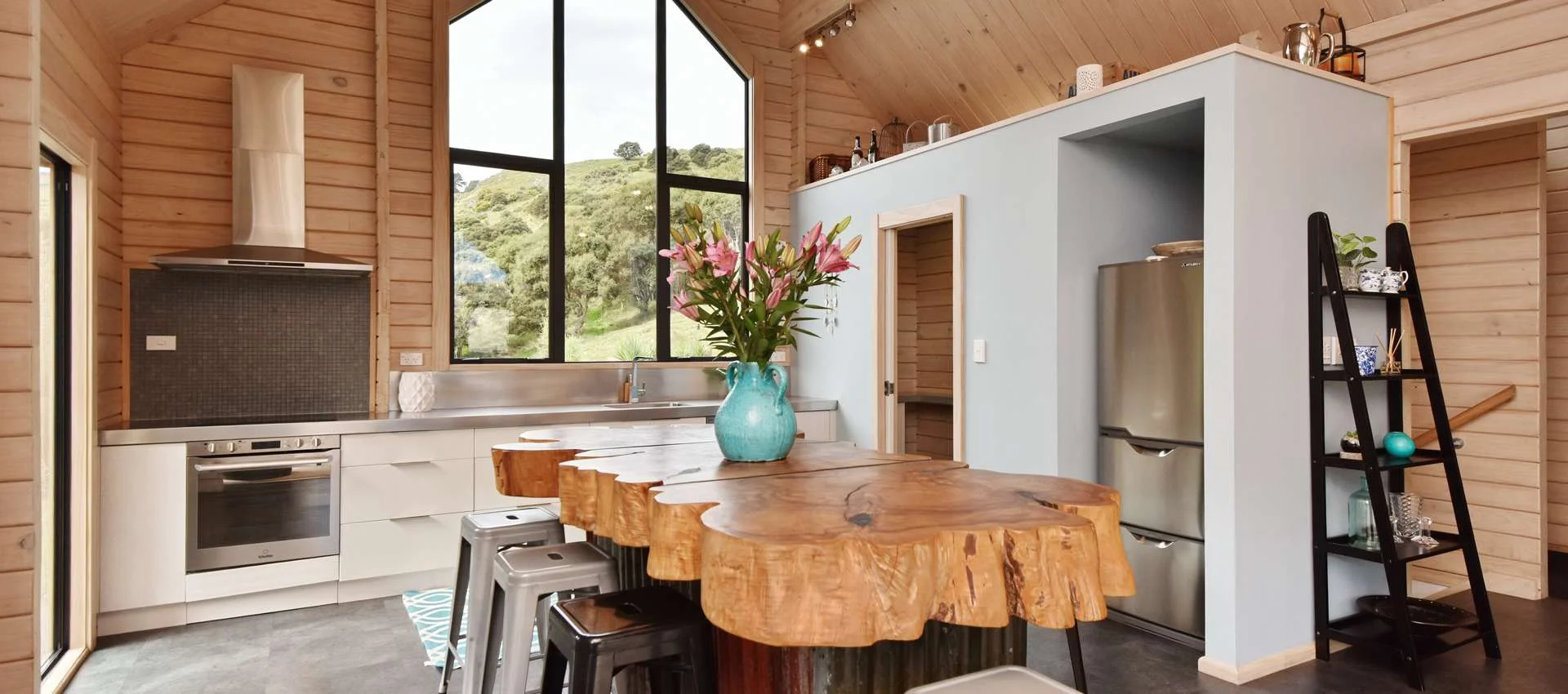
The earthquake itself is just the beginning..
When an earthquake hits it is an incredibly confronting experience which will be with you for the rest of your life. The aftershocks which follow – sometimes for years – can make even the hardiest of us nervous wrecks running for shelter. The news doesn’t report on this, nor does it report much on the profound impact the earthquake will have on people’s lives for many years to come. From ongoing battles with insurance companies, to stress related mental health issues and marriage breakdowns, to behavioural issues in children (including PTSD) whose homelife will never be the same as many of their parents experience extreme stress relating to the rebuilding of their home and life. People in Christchurch are still engaged in highly stressful disputes with their insurance companies to this day – in 2023 – some 12 years after the earthquake. Imagine the toll this takes on your health and well-being.
New Zealand is positioned on some very restless tectonic plates; it’s called the Shaky Isles for a reason. More earthquakes will strike. Our Solid Timber homes will do more than provide the ultimate in safety for you and your family when they do; their low damage design will allow you to carry on your life with minimal interruption in the years following the event.
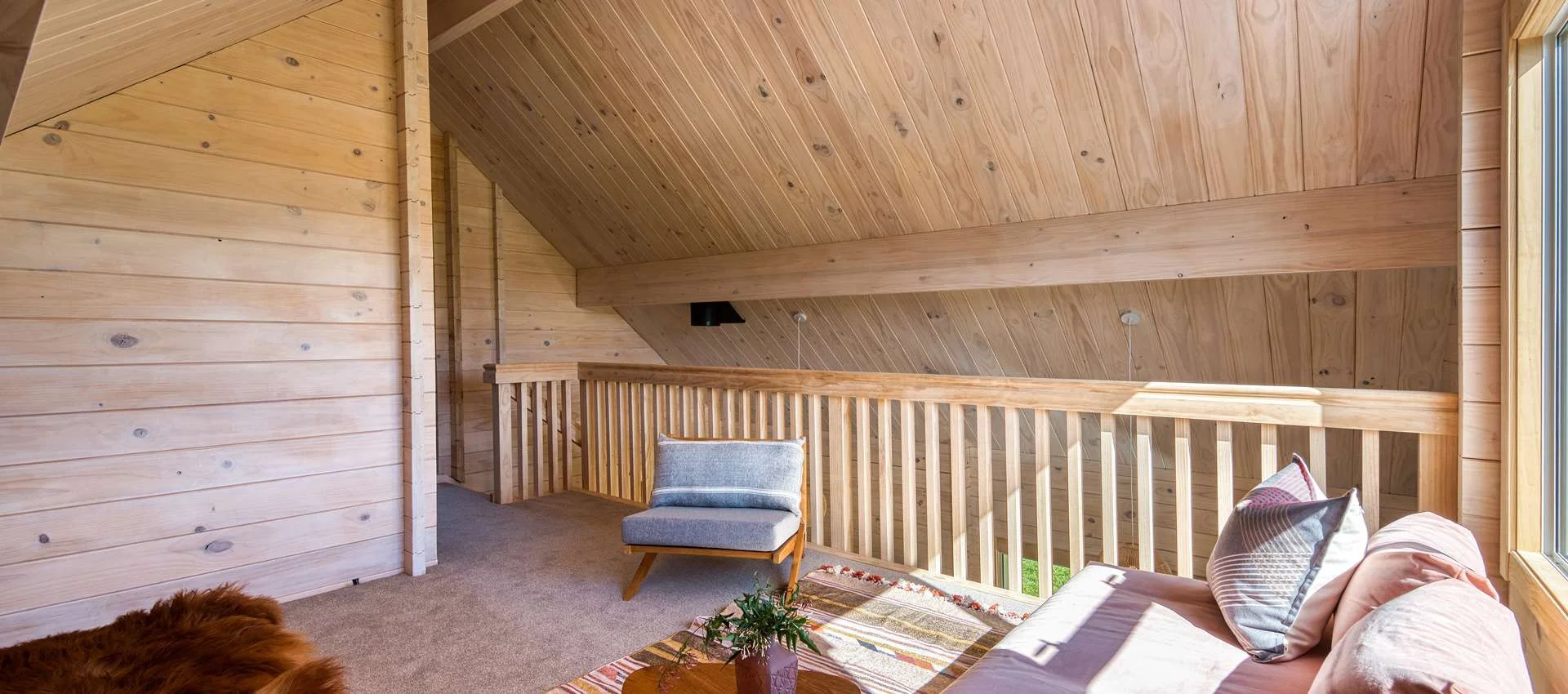
Protect what you hold dear
Building a home from our Solid Timber or Transportables range could be the best decision you ever make

